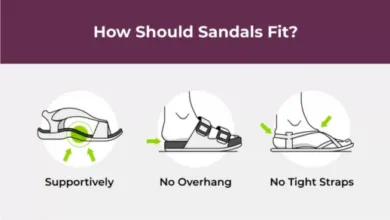The Essential Guide to Web Design: Best Practices, Trends, and Tips for 2024

In today’s digital world, web design is a critical aspect of creating an online presence that is not only visually appealing but also functional and user-friendly. Whether you are a business owner looking to create a website, a web designer looking to expand your skillset, or simply someone curious about web design, understanding the core elements of great design is essential. This guide will take you through the key components of web design, current design trends for 2024, and best practices to help you build a successful and engaging website.
What Is Web Design?
Web design refers to the process of planning, creating, and maintaining websites. It involves everything from the layout and structure of a webpage to its colors, fonts, images, and interactive features. Web design is focused on ensuring a smooth user experience (UX), ease of navigation, and clear visual communication. A well-designed website is not only aesthetically pleasing but also serves a functional purpose, guiding users toward their goals, whether that’s reading content, making a purchase, or contacting a business.
Effective web design is a combination of creativity, technical skills, and understanding user behavior. It requires both front-end and back-end knowledge, as well as an awareness of the latest web trends and best practices. Visit.
Key Elements of Web Design
Creating a successful website requires attention to various design elements that collectively impact the overall user experience. Let’s break down the most important aspects of web design.
- Layout and Structure The layout is the foundation of any website. It defines how information is organized and displayed. A clean, organized layout makes it easier for users to navigate and find what they’re looking for. There are several layout styles to choose from, such as grid layouts, single-column layouts, or asymmetrical designs. The layout should also be responsive, meaning it should adapt seamlessly to different screen sizes, from desktops to mobile devices. Visit.
- Typography Typography is a crucial component of web design. The fonts used on a website can greatly affect its readability and overall aesthetic. Choosing the right typefaces ensures that the content is legible and visually appealing. For a clean and professional look, it’s important to limit the number of font styles used and ensure consistency across pages. Web-safe fonts like Arial, Helvetica, and Georgia are commonly used for body text, while creative fonts may be reserved for headings or special emphasis. Visit.
- Color Scheme Colors play an essential role in evoking emotions and setting the tone of a website. A well-thought-out color scheme can enhance brand identity and create a cohesive visual experience. For example, blue is often associated with trust, while red can evoke urgency or excitement. When selecting a color palette, it’s important to ensure that there is enough contrast between the background and text for readability. Additionally, colors should align with the branding of the business or individual, creating a unified look across all platforms. Visit.
- Images and Visuals Visuals are one of the most important elements in web design. They help to break up large amounts of text, add interest, and create a connection with users. High-quality images, illustrations, and videos can make a website feel more engaging and immersive. It’s important to optimize images for fast loading times, as large file sizes can negatively impact website performance. Using relevant and branded visuals also enhances the credibility of the website and helps convey the message clearly. Visit.
- Navigation Clear and intuitive navigation is critical to the success of any website. A user-friendly navigation menu allows visitors to easily find the information they are seeking, whether it’s your product catalog, blog posts, or contact details. A website’s navigation structure should be simple, with well-organized categories and logical flow. It’s essential to test the navigation for usability, ensuring that users can access key pages in just a few clicks. Visit.
- Mobile Responsiveness With the rise of mobile browsing, mobile responsiveness has become a must in modern web design. A responsive website automatically adjusts its layout and content based on the device and screen size it is being viewed on. This is essential because users now access websites from smartphones, tablets, and other mobile devices. Google has also placed an emphasis on mobile-friendly websites in its search engine rankings, making it even more important to ensure that your website performs well across all devices. Visit.
Current Web Design Trends for 2024
Web design is constantly evolving, and staying up-to-date with the latest trends ensures that your website feels fresh and engaging. Here are some of the top trends in web design for 2024:
- Minimalist Design Minimalism continues to dominate web design in 2024. This design style focuses on simplicity and functionality by removing unnecessary elements and clutter. A minimalist website often uses ample white space, clean lines, and a limited color palette to create a visually appealing, easy-to-navigate website. The goal is to focus the user’s attention on the essential content and actions. Minimalist designs also tend to load faster and provide a more streamlined user experience. Visit.
- Dark Mode Dark mode has been a growing trend, especially on mobile devices and apps, and it has now become a staple in web design. This design style uses dark backgrounds with light-colored text and graphics. Not only does dark mode reduce eye strain, especially in low-light environments, but it also gives websites a sleek, modern appearance. Many websites now offer users the option to toggle between light and dark modes based on their preferences. Visit.
- 3D and Immersive Experiences As web technologies continue to advance, 3D design is becoming more prominent in web design. 3D elements add depth and interactivity to websites, allowing users to engage with the content in a more dynamic way. Whether it’s 3D product views, interactive animations, or virtual reality (VR) elements, incorporating 3D into your website creates a more immersive and engaging experience. This trend is particularly useful for eCommerce websites, where users can interact with products in a lifelike way. Visit.
- AI Integration Artificial Intelligence (AI) is starting to play a bigger role in web design. From chatbots that help users navigate the site to personalized recommendations based on user behavior, AI is improving the user experience. Web designers can use AI-powered tools to automate repetitive tasks, enhance personalization, and improve website performance. As AI technology becomes more advanced, it will likely become a standard tool in website design and development. Visit.
- Custom Illustrations Custom illustrations are increasingly being used to add a unique touch to websites. Unlike stock photos, custom illustrations provide an opportunity for brands to showcase their personality and creativity. Whether it’s playful cartoon-style images or more sophisticated artwork, custom illustrations help set websites apart from others and create a memorable user experience. This trend is particularly popular for creative industries and lifestyle brands. Visit.
Best Practices for Web Design
To ensure that your website is not only visually appealing but also functional and user-friendly, it’s essential to follow best practices in web design. Here are some key best practices to keep in mind:
- Prioritize User Experience (UX) At the heart of web design is the user experience. A well-designed website should be easy to navigate, with a clear structure and intuitive functionality. The website should be designed to meet the needs of users, making it easy for them to find what they’re looking for quickly. UX-focused design leads to better engagement, longer visits, and higher conversion rates.
- Focus on Website Speed Website speed is crucial for both user satisfaction and SEO. Slow-loading websites can lead to high bounce rates and a poor user experience. Optimizing images, reducing HTTP requests, and using proper caching techniques can help improve website speed. Tools like Google PageSpeed Insights can provide useful recommendations for optimizing website performance.
- Optimize for SEO A beautiful website is meaningless if it cannot be found by search engines. SEO (Search Engine Optimization) is essential for ensuring that your website ranks well in search results. Implementing SEO best practices, such as using relevant keywords, optimizing page titles and meta descriptions, and creating high-quality content, will help improve your website’s visibility and drive organic traffic.
- Use Consistent Branding Consistency is key to creating a cohesive website. Use consistent colors, fonts, and imagery throughout your website to reinforce your brand identity. A strong and consistent brand presence builds trust with visitors and makes your website more recognizable across various platforms.
- Make Your Website Accessible Accessibility is an important aspect of web design. Websites should be designed to be accessible to all users, including those with disabilities. This includes using alt text for images, ensuring proper color contrast, and making the website navigable via keyboard. Designing with accessibility in mind ensures that your website can be used by a wider audience.
Conclusion
Effective web design is a blend of creativity, functionality, and technical expertise. Whether you’re a business owner, marketer, or aspiring web designer, understanding the core elements of web design, staying up-to-date with the latest trends, and following best practices is key to creating a website that performs well and meets user expectations. By focusing on layout, typography, navigation, and responsive design, you can create an engaging and functional website that not only looks great but also enhances the user experience. Visit.




